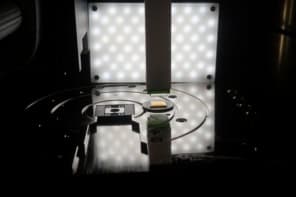A team of Dutch researchers has made the first direct measurements of the electrical conductivity of an individual strand of DNA - the building block of life. Cees Dekker from Delft University of Technology and colleagues designed two metal electrodes spaced just 4 nanometers apart - the smallest distance ever achieved by lithography. They then used a new 'electrostatic trapping' technique to bridge the electrodes with a single DNA molecule. The group discovered that short DNA molecules behave like large-bandgap semiconductors (Nature 403 635).
The Delft group fabricated the electrodes by making a slit in a silicon nitride film with standard lithography. A series of platinum layers were then sputtered across the slit until the gap was reduced to 4 nanometers. The electrodes were then immersed in a droplet of dilute DNA solution. A voltage applied between the electrodes generated an intense electric field, attracting a single molecule strand between the electrodes. Once the molecule was in place, the group could investigate how electrons are transferred in DNA.
"The results show that the charge carriers are being mediated by the molecular bands of DNA," says Dekker, "but more research is needed to explore DNA’s electrical properties under a large variety of conditions."
Last year Hans-Werner Fink and Christian Schönenberger from the University of Basel, Switzerland made the first measurements of the conductivity of a ‘rope’ of DNA molecules. They suggested that the molecules were ohmic conductors with fairly high conductivity.



